Below you can find a complete list of South Sudanese animals. We currently track 250 animals in South Sudan and are adding more every day!
South Sudan is a landlocked country situated near the heart of the African continent, along the borders with Sudan, Ethiopia, Uganda, Kenya, the Central African Republic, and the Democratic Republic of Congo. Following years of civil conflicts, the country gained its independence from Sudan in 2011.
There are many interesting facts to explore about the country’s rich wildlife, starting with its climate and geography. South Sudan is a land of vast plains and plateaus, which are fed by the Nile River and its various tributaries. The center of the country is covered in a vast wetland called the Sudd. This unique area is recognized as a wetland of international importance.
The Official National (State) Animal of South Sudan
The African fish eagle is the official national animal of South Sudan. Representing strength and fortitude, the image of an eagle holding a spear and a spade adorn the nation’s coat of arms. One of the more interesting facts is that this species survives on a diet of fish, water birds, and even baby crocodiles.
Where to Find the Top Wild Animals in South Sudan
South Sudan has set aside six national parks, representing some 15% of the entire country, where much of the spectacular wildlife can be seen.
- The Bandingilo National Park, located in the Equatoria region near the capital of Juba, is home to the world’s second-largest annual migratory route of antelopes, including the reedbuck, tiang, and white-eared kob. Visitors might also catch a glimpse of Sudan cheetahs, caracals, East African lions, and Nubian giraffes.
- The Boma National Park, which encompasses nearly 9,000 square miles of grasslands and floodplains near the eastern border, is a refuge for antelopes, buffalo, giraffes, cheetah, leopards, elephants, eagles, and vultures.
- The Lantoto National Park covers nearly 300 square miles of forests and glades near the southern city of Yambio. Elephants, buffalos, antelopes, baboons, and ostriches are all found here.
- The Nimule National Park, located near the southern border with Uganda, features hills and low-lying areas near the Nile River. A large number of elephants roam through the park.
- The Shambe National Park, located on the west bank of the White Nile, covers 240 square miles in the remote central part of the country. Shambe is a very rich source of large wildlife, including hippos, rhinos, ostriches, giraffes, lions, and monkeys. It’s also a popular bird-watching destination along migratory routes.
- The Southern National Park is a vast mixture of rainforests, gallery forests, woodlands, and grasslands. Crocodiles, lions, giraffes, buffalo, and antelopes roam the park, while freshwater fish like catfish and lungfish abound in the nearby rivers.
The Most Dangerous Animals in South Sudan Today
South Sudan is a land of immense biodiversity, but it’s also home to many dangerous snakes and large predators that pose a danger to human life. Visitors should watch out for the following species.
- Black Mamba – Native to the savannas, woodlands, and rocky slopes of sub-Saharan Africa, the black mamba is one of the most feared snakes in the entire continent because of its large size, aggressive behavior, and toxic venom. Without proper treatment, there is a very high chance of death within the first seven to 15 hours after injection.
- Puff Adder – The dangerous puff adder is responsible for more deaths than any other snake in Africa. Because of their tendency to remain still and blend in with the environment, people often make the mistake of stepping on them. If left untreated, tissue damage can spread from the injection site and kill a person swiftly.
- Hippopotamus – Large and aggressive, the hippo is responsible for a surprising number of deaths each year when people accidentally stumble upon their territory in the wild.
- Nile Crocodile – With its powerful jaws and formidable size, the Nile crocodile is responsible for more deaths than almost any other animal in Africa.
Endangered Animals in South Sudan
South Sudan, much like the rest of sub-Saharan Africa, is a unique biodiversity hotspot unlike anything else on the planet. Few other places have such a sheer concentration of large and unique animals. But even before its independence, much of the country’s wildlife was imperiled by the combined effects of civil conflict, habitat loss, and rampant and illegal poaching. Government control is almost non-existence in some areas of the country, placing the following species at risk.
- African Elephants – The African bush elephant (and possibly even the African forest elephant) is a mainstay of South Sudanese biodiversity, but it has been pushed into endangered status from habitat loss and poaching. The ivory is particularly valued on the international black market. It’s estimated that no more than a few thousand bush elephants remain in the country and around 400,000 in the entire world.
- African Wild Dog – This is the largest species of wild canine in all of Africa, but it’s currently threatened by population fragmentation, human persecution, and disease outbreaks.
- Black Rhinoceros – South Sudan is one of the last refuges of the Eastern black rhinoceros subspecies. It is in danger of becoming extinct from habitat loss and illegal poaching.
- Northern White Rhinoceros – This subspecies of the white rhino may already be extinct in the wild.
- Grevy’s Zebra – Named after a former president of France, which at the time controlled Ethiopia, this is the largest and also the most endangered of the three species of zebra. Its status in South Sudan is currently unknown, and it may be locally extinct already.
- Nubian Giraffe – This subspecies of the giraffe only has a few thousand individuals remaining. It is distinguished from the other subspecies by the facts of its larger chestnut-colored spots, surrounded by white color.
The Flag of South Sudan
South Sudan’s flag consists of black, red, and green horizontal stripes. It also holds thin white stripes and a blue triangle on the left side of the flag, with a yellow star in the center of the triangle. The black, red, and green horizontal stripes are separated by the white stripes.
South Sudanese Animals

Aardvark
Can move 2ft of soil in just 15 seconds!

Abyssinian
One of the oldest cat breeds in the world!
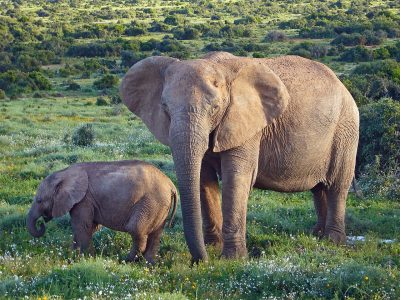
African Bush Elephant
Can drink up to 50 gallons a day

African Civet
Secretes up to 4g of musk every week!

African Clawed Frog
African clawed frogs were used as pregnancy testers from the 1930s to the early 1960s.
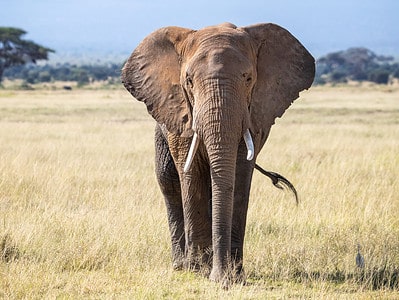
African Elephant
Both male and female African elephants have tusks. In Asian elephants, only the males have tusks.
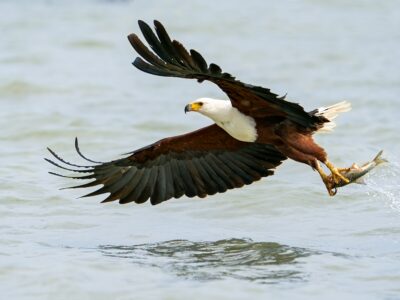
African Fish Eagle
African fish eagles belong to the genus of sea eagles

African Jacana
The males raise the young

African Wild Dog
Also known as the painted dog!
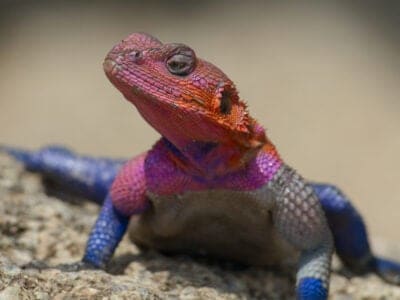
Agama Lizard
The agama forms small social groups that contain both dominant and subordinate males.
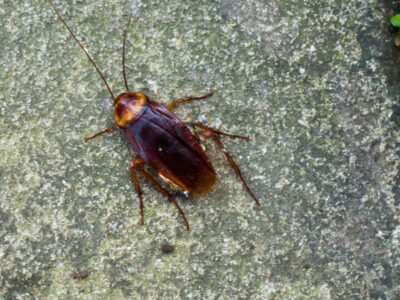
American Cockroach
Despite its name, actually originated from Africa and the Middle East

Ant
First evolved 100 million years ago!

Antelope
Renew their horns every year!

Armyworm
They are so named because they "march" in armies of worms from one crop to another in search of food
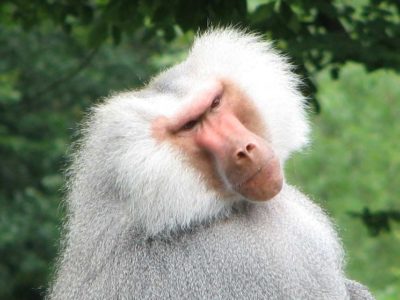
Baboon
Can travel more than four miles a day!

Banana Cinnamon Ball Python
Banana cinnamon ball pythons came from combining the banana and cinnamon genes.

Banana Spider
People spin clothing and fishing nets out of these spiders’ silk.

Barb
There are over 1768 known species!

Barn Owl
Found everywhere around the world!

Barn Swallow
Older offspring help care for new hatchlings.

Bat
Detects prey using echolocation!
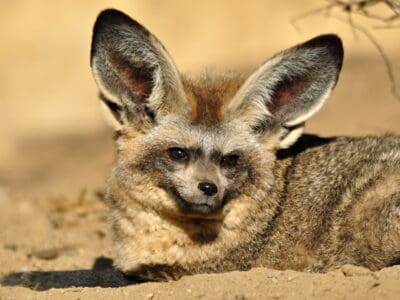
Bat-Eared Fox
Bat-eared foxes can run up to 35 MPH!

Bed Bugs
Bed bugs feed for 4-12 minutes.

Bee
Rock paintings of bees date back 15,000 years

Beetle
There are more than 350,000 different species

Bichir
The bichir species is more than 400 million years old

Bird
Not all birds are able to fly!

Biscuit Beetle
The biscuit beetle form a symbiotic relationship with yeast
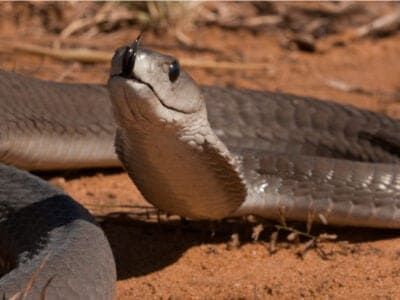
Black Mamba
Black mambas are the longest venomous snake in Africa, and second longest in the world.

Black Widow Spider
They typically prey on insects!
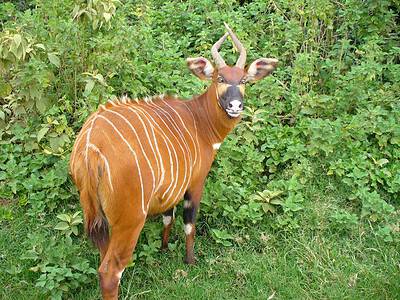
Bongo
Long and heavy spiralled horns!

Brazilian Treehopper
“Mild-Mannered Minimonsters”
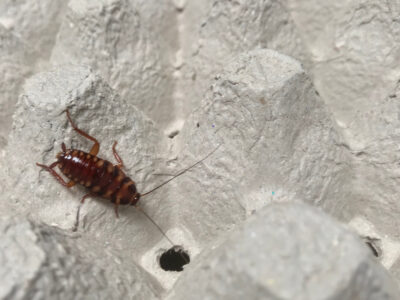
Brown-banded Cockroach
Females glue egg cases to furniture

Brown Dog Tick
Can live its entire life indoors

Buffalo
"They look like you owe them money."

Bumblebee
The most common species of bee!

Bush Baby
In a series of leaps, this creature can cover almost 30 feet of distance in just a few seconds.

Butterfly
There are thought to be up 17,500 species!

Caecilian
Some species' babies use their hooked or scraper-like teeth to peel off and eat their mother's skin

Caracal
Has 20 different muscles in it's ears!

Carpenter Ant
Carpenter ants can lift up to seven times their own weight with their teeth!

Cat
May have been domesticated up to 10,000 years ago.

Caterpillar
The larvae of a moth or butterfly!

Catfish
There are nearly 3,000 different species!

Centipede
There are about 3,000 documented species!
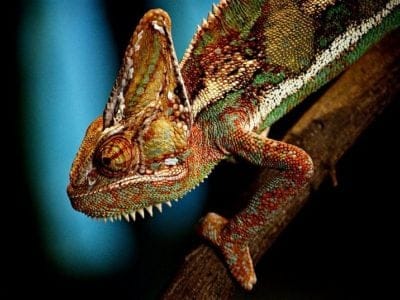
Chameleon
There are more than 160 different species!
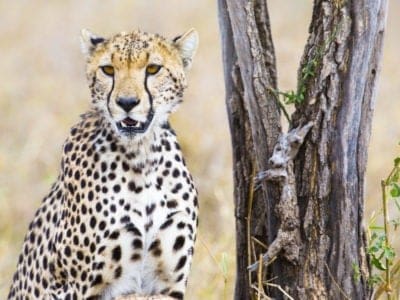
Cheetah
The fastest land mammal in the world!

Chicken
First domesticated more than 10,000 years ago!
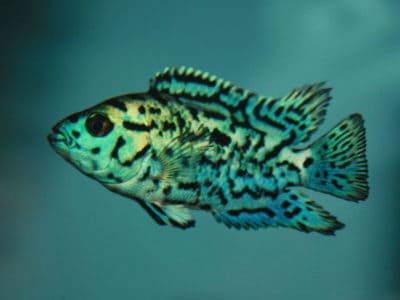
Cichlid
There are more than 2 000 known species!

Cockroach
Dated to be around 300 million years old!

Codling Moth
Pupae are able to undergo diapause to survive poor fruit yield years and winter.

Common Buzzard
The most common raptor in the UK!

Common Furniture Beetle
The common furniture beetle feeds exclusively on wood

Common House Spider
House spiders have the ability to eat most insects in a home.

Cormorant
They can fly 35 mph and dive 150 feet below water.

Cow
There are nearly 1.5 billion worldwide!

Crab
There are 93 different crab groups

Crab Spider
Crab Spiders can mimic ants or bird droppings

Crane
Many are critically endangered species!

Cricket
Male crickets can produce sounds by rubbing their wings together

Crocodile
Have changed little in 200 million years!

Crocodylomorph
Crocodylomorphs include extinct ancient species as well as 26 living species today.

Crow
A group of these birds is called a Murder.
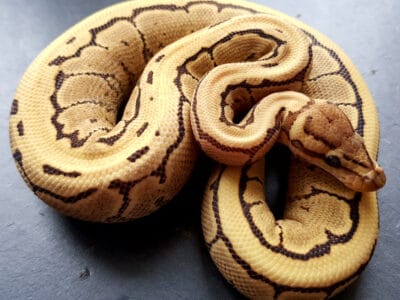
Desert Ghost Ball Python
Desert ghost ball pythons are even more beautiful when they're bred with another type like enchi ball pythons.
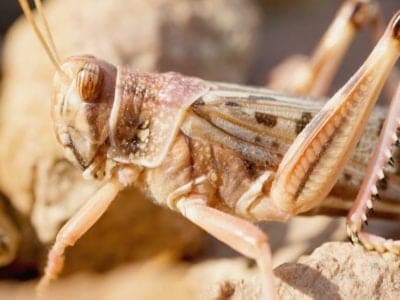
Desert Locust
Solitary locusts are grey while gregarious locusts are yellow with stripes.

Dog
First domesticated in South-East Asia!

Dog Tick
Dog ticks feed on dogs and other mammals

Donkey
First domesticated 5,000 years ago!

Dragonfly
It's larvae are carnivorous!

Duck
Rows of tiny plates line their teeth!

Dung Beetle
The dung beetle can push objects many times its own weight

Earthworm
They are hermaphrodites, which means they have male and female organs

Earwig
There are nearly 2,000 different species!

Eel
Eels can be a mere few inches long to 13 feet!
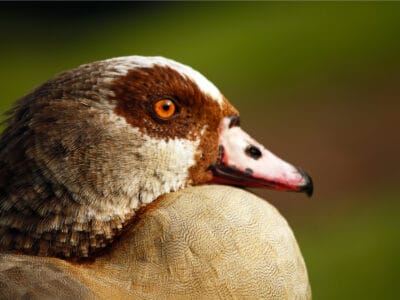
Egyptian Goose
A duck species that resembles a goose when flying
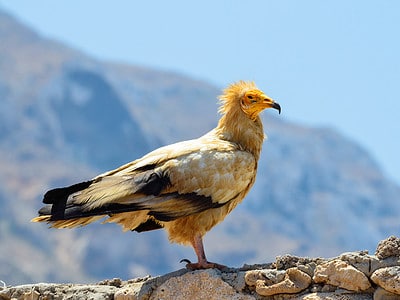
Egyptian Vulture
They steal large ostrich eggs and use rocks and pebbles to crack the shells.
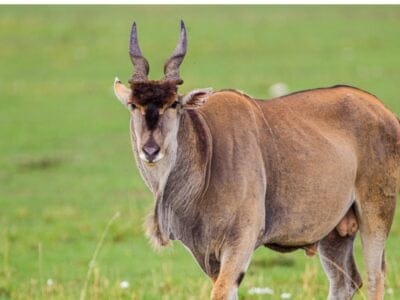
Eland
Both females and males have horns.
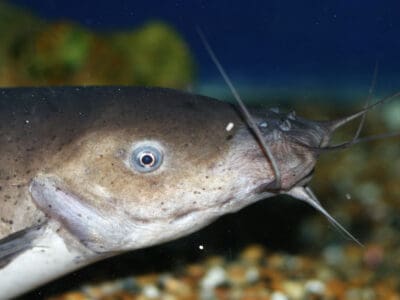
Electric Catfish
The electric catfish can discharge an electric shock up to 450 volts

Elephant
Spends around 22 hours a day eating!

Elephant Shrew
Found exclusively on the African continent!

Falcon
The fastest creatures on the planet!

False Widow Spider
False spiders actually prey on black widow spiders and other hazardous spiders

Fire Ball Python
The fire ball python morph is known for its rich golden and reddish-brown coloration.

Firefly
The firefly produces some of the most efficient light in the world

Flea
Adult fleas can jump up to 7 inches in the air

Fly
There are more than 240,000 different species!

Fox
Only 12 species are considered "true foxes"

Freeway Ball Python
Freeway ball pythons come from breeding yellow belly and asphalt ball pythons.

Frog
There are around 7,000 different species!
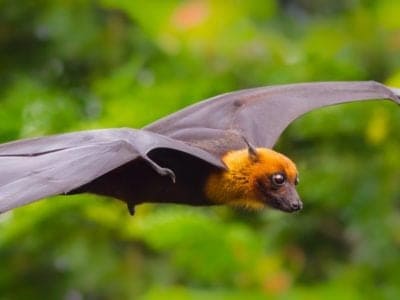
Fruit Bat
Among the largest bats in the world

Fruit Fly
Fruit flies are among the most common research animals in the world
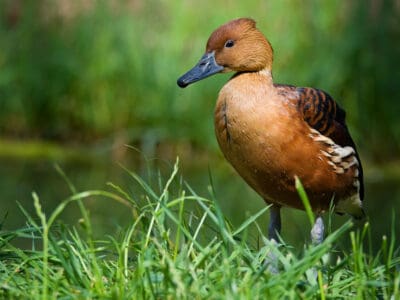
Fulvous Whistling Duck
They build a ramp from their nest, which leads to a nearby water source
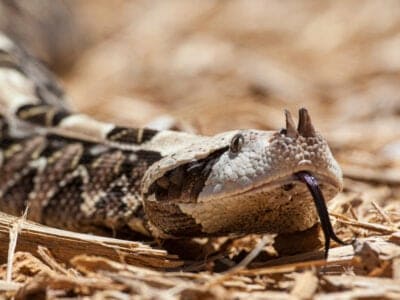
Gaboon Viper
Gaboon vipers are the largest vipers in Africa.
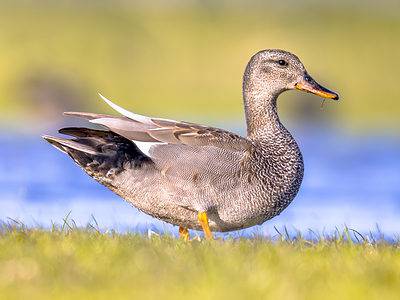
Gadwall
They make many sounds when trying to attract a mate.

Gazelle
Named for the Arabic word for love poems

Gecko
There are thought to be over 2,000 species!

Gerbil
Originally known as the Desert Rat!

German Cockroach
The most common type of urban roach
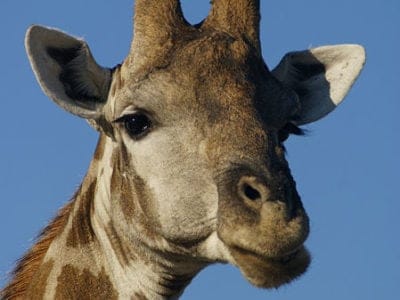
Giraffe
Long, black tongue can grow to 18 inches long!

Glass Lizard
Can grow up to 4ft long!

Glowworm
Found inhabiting dense woodland and caves!

Gnat
Males form large mating swarms at dusk

Goat
Most closely related to the Sheep!

Golden Oriole
Migrates between Europe and Asia!

Grasshopper
There are 11,000 known species!

Green Bee-Eater
Mainly eats honeybees!
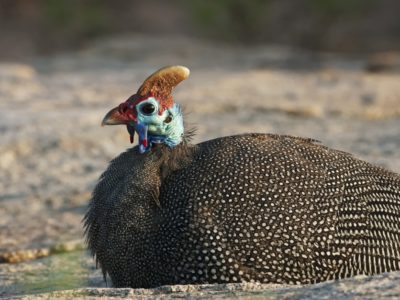
Guinea Fowl
Found in a vairety of African habitats!

Gypsy Moth
One of the most invasive species in the world

Hamster
Able to run as quickly backwards as forwards!

Hare
Can reach speeds of over 50 mph!

Hawk Moth Caterpillar
Many hawk moth caterpillars eat toxins from plants, but don’t sequester them the way milkweed butterflies do. Most toxins are excreted.

Hedgehog
Thought to be one of the oldest mammals on Earth!

Heron
Inhabits wetlands around the world!
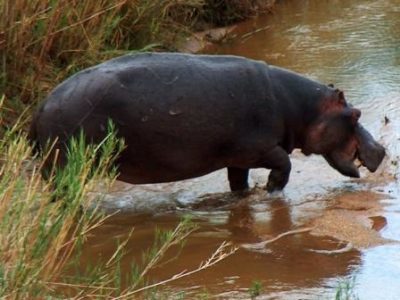
Hippopotamus
Has pink anti-bacterial sweat!
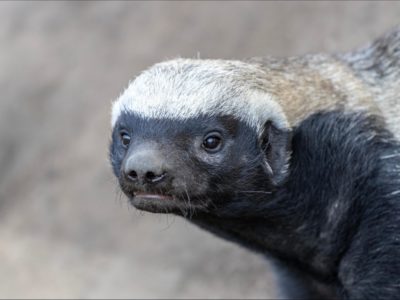
Honey Badger
One of earth's bravest creatures!

Honey Bee
There are only 8 recognized species!

Hoopoe
Stunning bird with a stinky way to deter predators!

Horse
Has evolved over 50 million years!

Horsefly
Horseflies have been seen performing Immelmann turns, much like fighter jets.

Housefly
The fly has no teeth

Human
Thought to have orignated 200,000 years ago!

Huntsman Spider
Some huntsman spiders have an interesting way of moving around. Some cartwheel while others do handsprings or backflips.
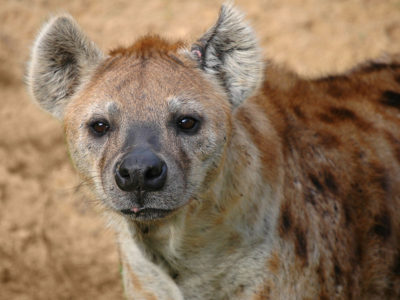
Hyena
There are four different species!

Ibis
Found in swamps, marshes and wetlands!

Insects
There are an estimated 30 million species!

Jacana
The jacana has the ability to swim underwater
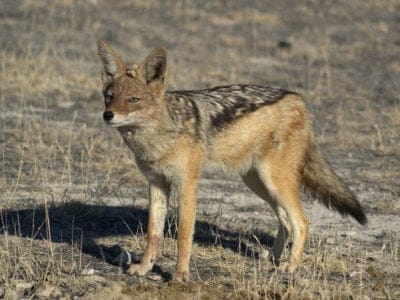
Jackal
Can maintain speeds of 16 km/h!

Jumping Spider
Some can jump 50 times the length of their bodies
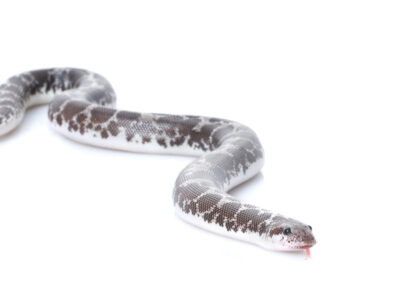
Kenyan Sand Boa
A popular pet snake that comes in dozens of morphs!
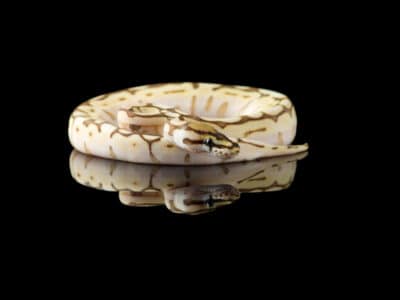
Killer Clown Ball Python
Killer clown ball pythons can cost several thousand dollars.

Kingfisher
Inhabits wetlands and woodlands worldwide!
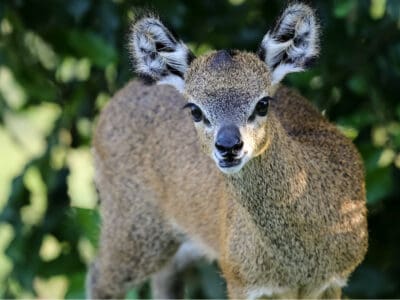
Klipspringer
Klipspringers can jump as high as 10-12ft!
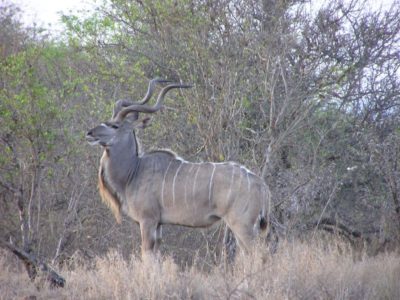
Kudu
Lives in herds of up to 24 individuals!

Ladybug
There are more than 5,000 species worldwide!

Lappet-faced Vulture
Lappet-faced vultures are tidy and wash their heads in a body of water after they’ve eaten
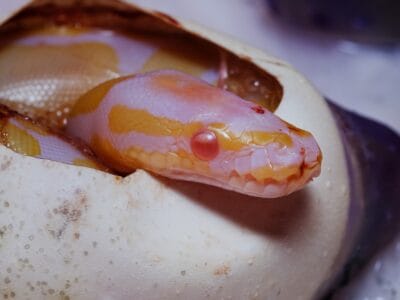
Lavender Albino Ball Python
The first two lavender albino ball pythons were wild-hatched and imported from Africa.

Leech
Has 10 pairs of eyes!
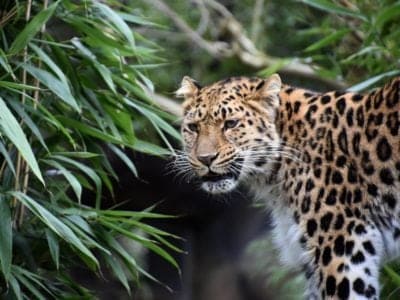
Leopard
Spends much of the time high in the trees!

Leopard Tortoise
The most widely distributed tortoise in Africa!

Lesser Jacana
The lesser jacana is nomadic, often moving in search of temporary wetland habitats.

Liger
The offspring of a lion and tiger parents!
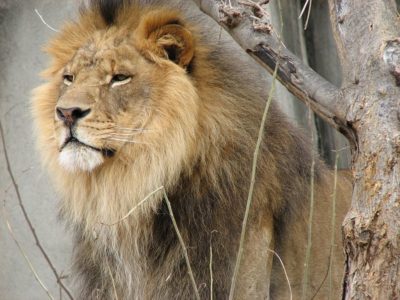
Lion
Lives in small groups called prides!

Lizard
There are around 5,000 different species!

Locust
Each locust can eat its weight in plants each day.

Maggot
Will only live in wet areas

Magpie
They are found across Europe, Asia and Africa!
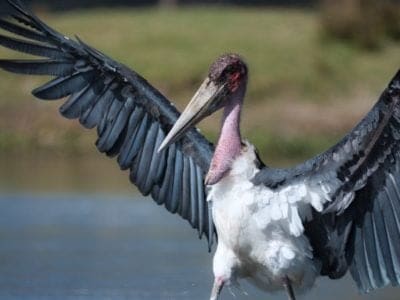
Marabou Stork
The marabou stork does not have a voice box.

Mayfly
There are 2,500 known species worldwide!

Mealybug
They have a symbiotic relationship with ants.

Millipede
Some species have a poisonous bite!

Mole
Primarily hunts and feeds on Earthworms!
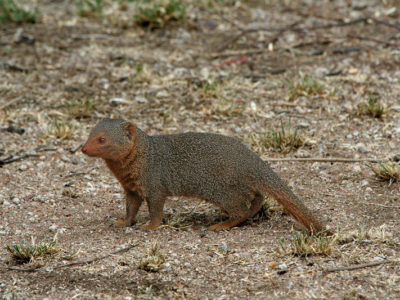
Mongoose
Range in size from just 1 to 3 foot!

Mongrel
Has characteristics of two or more breeds!

Monitor Lizard
Some species are thought to carry a weak venom!

Monkey
There are around 260 known species!

Moorhen
Feeds on aquatic insects and water-spiders!

Mosquito
Only the female mosquito actually sucks blood

Moth
There are 250,000 different species!

Mouse
Found on every continent on Earth!

Mule
The offspring of a horse and donkey parents!

Nematode
Nematodes range in size from 1/10 of an inch to 28 feet long

Nightingale
Named more than 1,000 years ago!
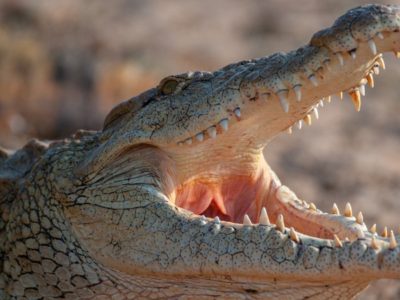
Nile Crocodile
Unlike other reptiles, the male Nile crocodile will stay with a female to guard their nest of eggs.
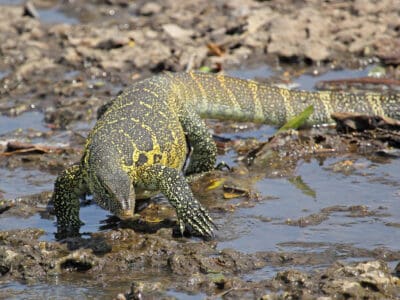
Nile Monitor
The Nile monitor is the world's fourth-largest lizard!

No See Ums
There are more than 5,000 species.

Northern Pintail
Northern pintails migrate at night with speeds reaching 48 miles per hour!

Olive Baboon
Olive baboons will sometimes form strong friendships with each other

Orange Dream Ball Python
The "Orange Dream" name came from the idea that the morph would make its first breeder a million dollars.

Orb Weaver
Females are about four times the size of males
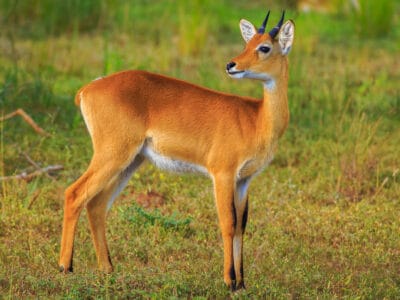
Oribi
Males oribis spend most of their time patrolling the borders of their territories; they can do this about 16 times an hour! However, 27% of their day is spent grazing.

Osprey
They reuse nesting sites for 70 years!

Otter
There are 13 different species worldwide

Owl
The owl can rotate its head some 270 degrees

Panda Pied Ball Python
The panda pied ball python morph is a combination of the piebald and black pastel traits.
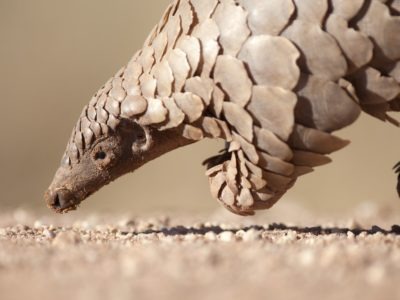
Pangolin
Bad eyesight, but great sense of smell
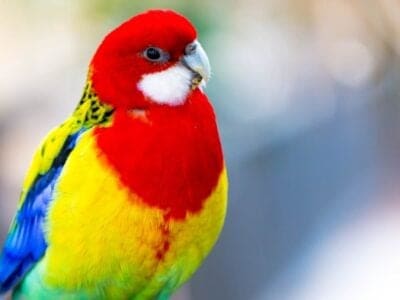
Parakeet
Monk parakeets are the only parakeets that actually build nests. They’re also the only parakeets to nest in great colonies.

Parrot
Can live for up to 100 years!
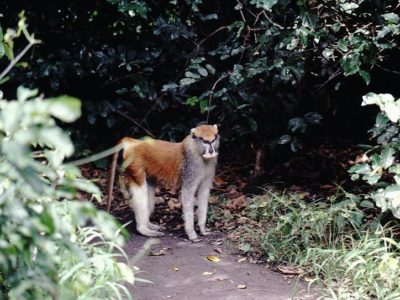
Patas Monkey
The fastest species of primate in the world!

Peregrine Falcon
Fastest animal on Earth

Pheasant
Females lay between 8 and 12 eggs per clutch!

Pigeon
They can find their way back to their nests from up to 1300 miles away.

Praying Mantis
The mantis can turn its head 180 degrees.
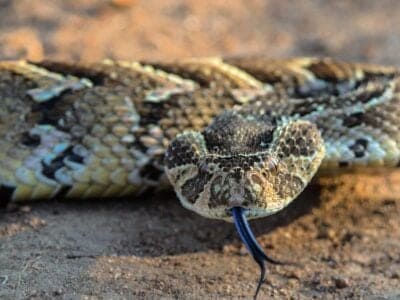
Puff Adder
This large snake is so-named because it will puff up its body to appear bigger than it is when directly threatened by a predator or person.

Quail
Inhabits woodland and forest areas worldwide!

Rabbit
There are more than 300 different species!

Rat
Omnivores that eat anything!
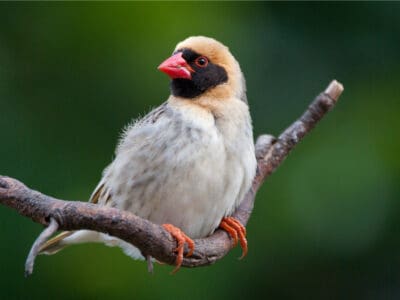
Red-Billed Quelea Bird
Is the most populous bird in the world

Rhinoceros
It's horns are made from keratin!

River Turtle
Inhabits freshwater habitats around the world!

Robin
There are more than 45 species in Australia alone!

Rock Hyrax
Actually related to Elephants and Manatees!
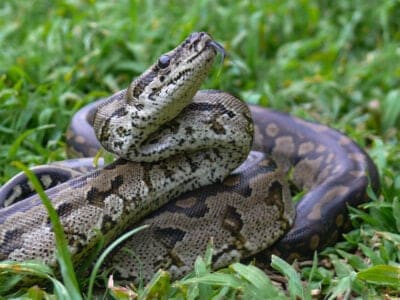
Rock Python
Rock pythons may have crossbred with the escaped Burmese pythons in Florida.

Rodents
The capybara, the world’s largest rodent, likes to be in and around bodies of water. Because of this, the Catholic Church in South America decided that it was a fish, and people were allowed to eat it during Lent and First Fridays.

Rooster
Will mate with the entire flock!

Sable Ferret
Ferrets were used during the Revolutionary War to keep down the rat population.
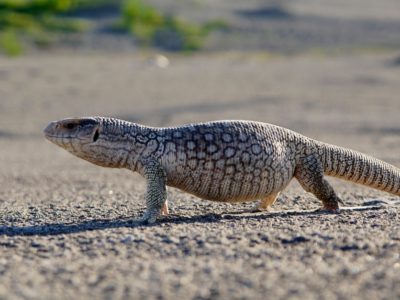
Savannah Monitor
Savannah monitors are one of the most popular lizards in captivity.
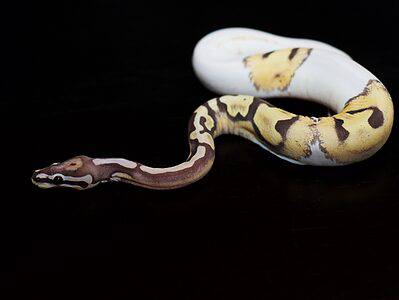
Scaleless Ball Python
Aside from the ocular scales covering each of its eyes, the scaleless ball python's body is completely smooth.

Scorpion
There are around 2,000 known species!

Sea Eagle
The sea eagle tends to mate for life with a single partner

Seahorse
Males give birth to up to 1,000 offspring!

Serval
Can leap more than 1 meter into the air!

Sheep
Around 35 million in the English countryside!
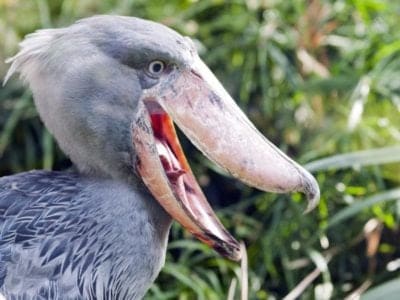
Shoebill Stork
Adults greet each other by clattering their bills together.

Shrew
The spinal column of the shrew Scutisorex somereni is so strong and reinforced that it can support the weight of an adult human.

Shrimp
There are 2,000 different species worldwide!

Skink Lizard
Some skinks lay eggs in some habitats while giving birth to skinklets in other habitats.

Slug
They glide around on one foot, which is aided by the slime they produce

Smokybrown Cockroach
Has up to 45 eggs per egg case

Snail
There are nearly 1,000 different species!

Snake
There are around 4,000 known species worldwide

Sparrow
There are 140 different species!

Spider Wasp
They prey on spiders to feed their larvae or they parasitize other spider wasps.
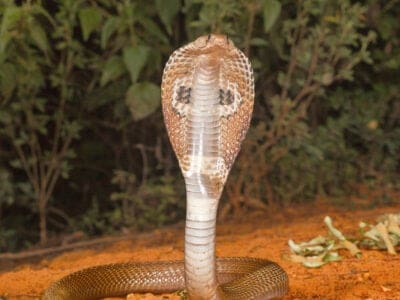
Spitting Cobra
Spitting cobras are types of cobras that can spit venom at predators and prey.

Squirrel
Small rodents found in woodlands worldwide!

Stick Insect
There are more than 3,000 different species!
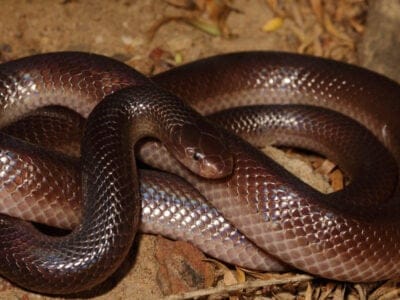
Stiletto Snake
Because of their unique venom delivery system, stiletto snakes are almost impossible to hold safely in the usual way (with fingers behind the head) without being bitten.

Stork
They can’t sing like other birds.
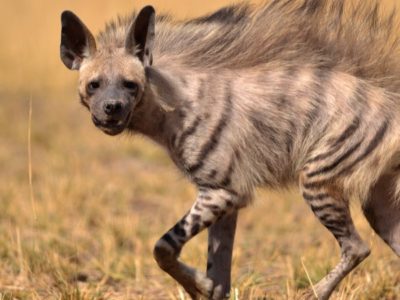
Striped Hyena
The striped hyenas usually mark their territories with the help of the scent gland secretions from their anal pouch.

Sunset Ball Python
Sunset ball pythons are bred with several other morphs to get designer colors.

Swan
Populations have been affected by pollution!

Tarantula Hawk
Tarantula hawks are excellent pollinators, especially for milkweed.

Termite
Their mounds can be up to 9 meters tall!

Thrush
The American robin is called the robin because its red breast reminded European settlers of the robin back in the old country.

Tick
They inject hosts with a chemical that stops them from feeling the pain of the bite

Tiger Beetle
The adult tiger beetle is one of the fastest land insects in the world

Tortoise
Can live until they are more than 150 years old!

Tree Frog
Found in warmer jungles and forests!
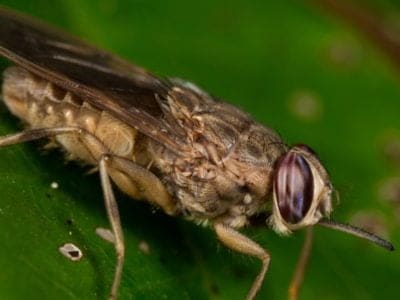
Tsetse Fly
Tsetse flies are large biting flies that live in the tropical regions of Africa.
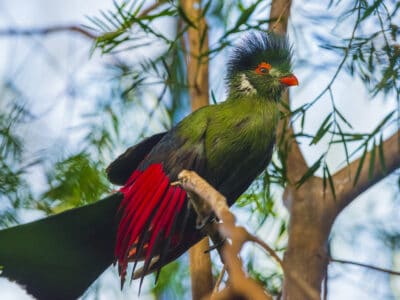
Turaco
Their name means “banana-eater,” but they rarely ever eat bananas.

Turtles
Some species of aquatic turtles can get up to 70 percent of their oxygen through their butt.

Vinegaroon
Vinegaroons can spray 19 times before the glands are depleted

Viper
Vipers are one of the most widespread groups of snakes and inhabit most

Vulture
There are 30 different species worldwide!
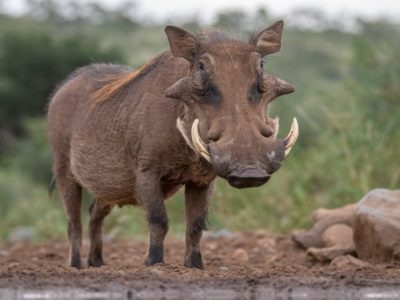
Warthog
Has two sets of tusks on it's face!

Wasp
There are around 75,000 recognised species!

Water Buffalo
Has been domesticated for thousands of years!

White Ferret / Albino Ferrets
There are two different types of white ferrets!
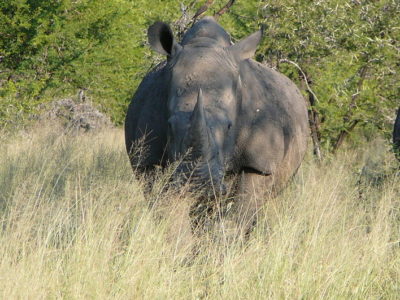
White Rhinoceros
The second largest animal on the land!

Wolf Spider
Carnivorous arachnid that hunts its prey.

Woodlouse
This animal can roll up into a ball

Woodpecker
There are 200 different species!

Worm
Doesn’t have eyes.
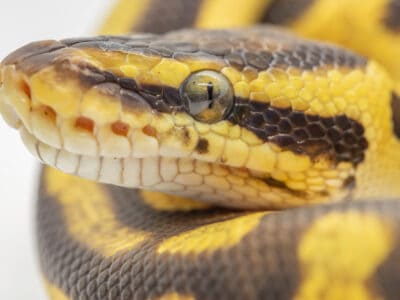
Yellow Belly Ball Python
The yellow belly gene is co-dominant and doesn't completely override other genes.
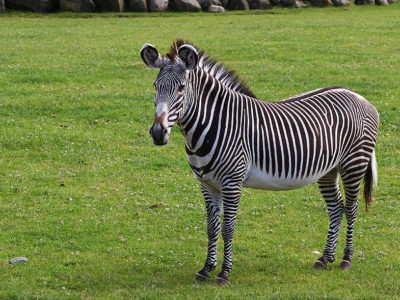
Zebra
Stripe patterns are unique to each individual!
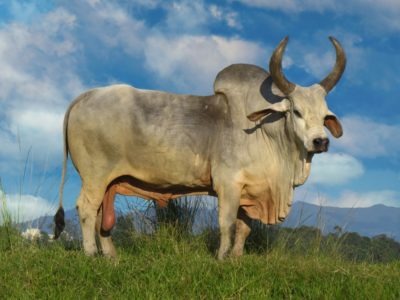
Zebu
There are around 75 different species!
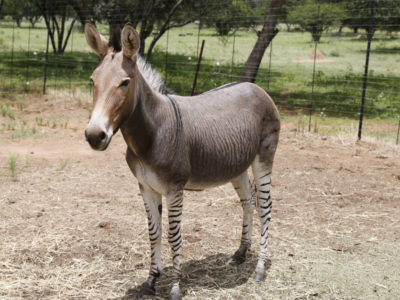
Zonkey
The offspring of Zebra and Donkey parents!
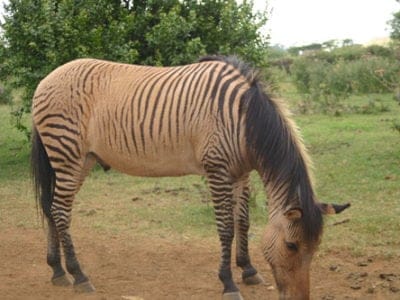
Zorse
The offspring of a Zebra and Horse parents!
South Sudanese Animals List
- Aardvark
- Abyssinian
- African Bush Elephant
- African Civet
- African Clawed Frog
- African Elephant
- African Fish Eagle
- African Jacana
- African Wild Dog
- Agama Lizard
- American Cockroach
- Ant
- Antelope
- Armyworm
- Baboon
- Banana Cinnamon Ball Python
- Banana Spider
- Barb
- Barn Owl
- Barn Swallow
- Bat
- Bat-Eared Fox
- Bed Bugs
- Bee
- Beetle
- Bichir
- Bird
- Biscuit Beetle
- Black Mamba
- Black Widow Spider
- Bongo
- Brazilian Treehopper
- Brown-banded Cockroach
- Brown Dog Tick
- Buffalo
- Bumblebee
- Bush Baby
- Butterfly
- Caecilian
- Caracal
- Carpenter Ant
- Cat
- Caterpillar
- Catfish
- Centipede
- Chameleon
- Cheetah
- Chicken
- Cichlid
- Cockroach
- Codling Moth
- Common Buzzard
- Common Furniture Beetle
- Common House Spider
- Cormorant
- Cow
- Crab
- Crab Spider
- Crane
- Cricket
- Crocodile
- Crocodylomorph
- Crow
- Cuckoo
- Desert Ghost Ball Python
- Desert Locust
- Dog
- Dog Tick
- Donkey
- Dormouse
- Dragonfly
- Duck
- Dung Beetle
- Earthworm
- Earwig
- Eel
- Egyptian Goose
- Egyptian Vulture
- Eland
- Electric Catfish
- Elephant
- Elephant Shrew
- Falcon
- False Widow Spider
- Fire Ball Python
- Firefly
- Flea
- Fly
- Fox
- Freeway Ball Python
- Frog
- Fruit Bat
- Fruit Fly
- Fulvous Whistling Duck
- Gaboon Viper
- Gadwall
- Gazelle
- Gecko
- Gerbil
- German Cockroach
- Giraffe
- Glass Lizard
- Glowworm
- Gnat
- Goat
- Golden Oriole
- Grasshopper
- Green Bee-Eater
- Guinea Fowl
- Gypsy Moth
- Hamster
- Hare
- Hawk Moth Caterpillar
- Hedgehog
- Heron
- Hippopotamus
- Honey Badger
- Honey Bee
- Hoopoe
- Horse
- Horsefly
- Housefly
- Human
- Huntsman Spider
- Hyena
- Ibis
- Insects
- Jacana
- Jackal
- Jumping Spider
- Kenyan Sand Boa
- Killer Clown Ball Python
- Kingfisher
- Klipspringer
- Kudu
- Ladybug
- Lappet-faced Vulture
- Lavender Albino Ball Python
- Leech
- Leopard
- Leopard Tortoise
- Lesser Jacana
- Liger
- Lion
- Lizard
- Locust
- Maggot
- Magpie
- Marabou Stork
- Mayfly
- Mealybug
- Millipede
- Mole
- Mongoose
- Mongrel
- Monitor Lizard
- Monkey
- Moorhen
- Mosquito
- Moth
- Mouse
- Mule
- Nematode
- Nightingale
- Nile Crocodile
- Nile Monitor
- No See Ums
- Northern Pintail
- Olive Baboon
- Orange Dream Ball Python
- Orb Weaver
- Oribi
- Osprey
- Otter
- Owl
- Panda Pied Ball Python
- Pangolin
- Parakeet
- Parrot
- Patas Monkey
- Peregrine Falcon
- Pheasant
- Pigeon
- Praying Mantis
- Puff Adder
- Quail
- Rabbit
- Rat
- Red-Billed Quelea Bird
- Rhinoceros
- River Turtle
- Robin
- Rock Hyrax
- Rock Python
- Rodents
- Rooster
- Sable Ferret
- Savannah Monitor
- Scaleless Ball Python
- Scorpion
- Sea Eagle
- Seahorse
- Serval
- Sheep
- Shoebill Stork
- Shrew
- Shrimp
- Skink Lizard
- Slug
- Smokybrown Cockroach
- Snail
- Snake
- Sparrow
- Spider Wasp
- Spitting Cobra
- Squirrel
- Stick Insect
- Stiletto Snake
- Stork
- Striped Hyena
- Sunset Ball Python
- Swallowtail Butterfly
- Swan
- Tarantula Hawk
- Termite
- Thrush
- Tick
- Tiger Beetle
- Tortoise
- Tree Frog
- Tsetse Fly
- Turaco
- Turtles
- Vinegaroon
- Viper
- Vulture
- Warthog
- Wasp
- Water Buffalo
- White Ferret / Albino Ferrets
- White Rhinoceros
- Wolf Spider
- Woodlouse
- Woodpecker
- Worm
- Yellow Belly Ball Python
- Zebra
- Zebu
- Zonkey
- Zorse
Animals in South Sudan FAQs (Frequently Asked Questions)
What animals live in South Sudan?
South Sudan is particularly rich in many mammalian species, including rodents, bats, warthogs, large cats, canines, primates, antelopes, and other hoofed animals. Common birds include pelicans, plovers, weavers, shrikes, eagles, cranes, ostriches, and partridges. Lizards, snakes, mosquitoes, and flies are also abundant.
What is the national animal of South Sudan?
The African fish eagle is the national animal of South Sudan.
Are there lions in South Sudan?
Yes, South Sudan is home to the East African lion subspecies.
How many animals are there in South Sudan?
It is not currently known how many species of animals are present in South Sudan.






